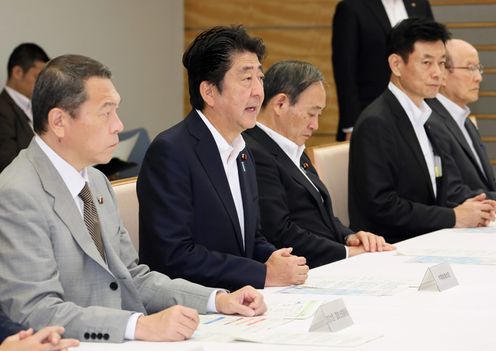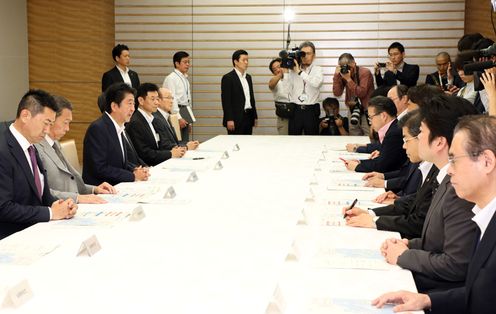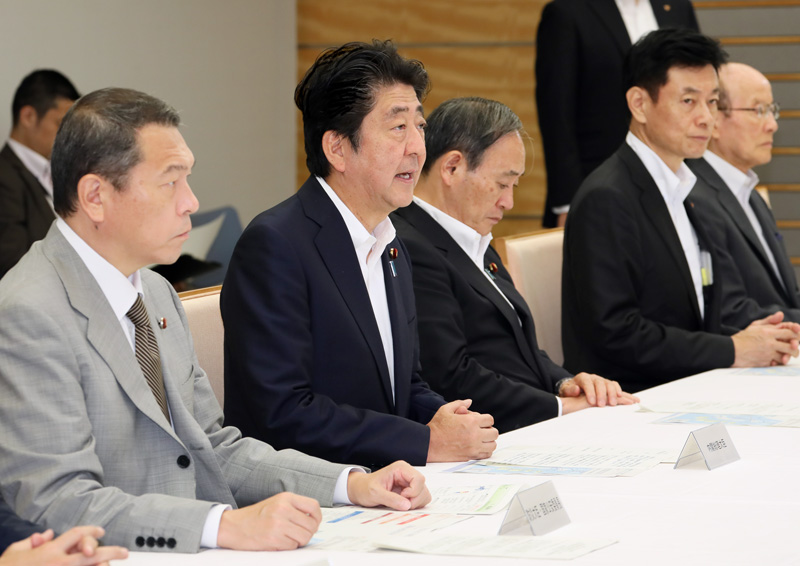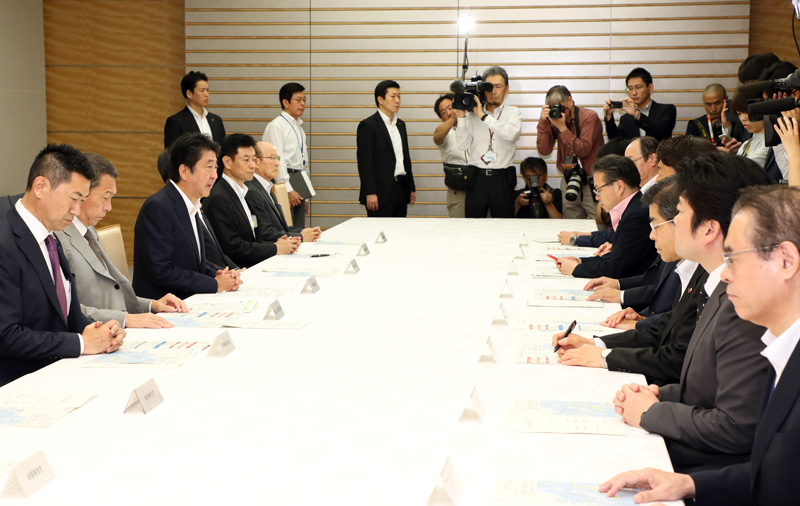Home > News > The Prime Minister in Action > August 2018 > 19th Meeting of the Emergency Response Headquarters for the Heavy Rain in July 2018
The Prime Minister in Action
19th Meeting of the Emergency Response Headquarters for the Heavy Rain in July 2018
August 24, 2018

Photograph of the Prime Minister making a statement

Photograph of the Prime Minister making a statement
[Provisional Translation]
On August 24, 2018, Prime Minister Shinzo Abe attended the 19th meeting of the Emergency Response Headquarters for the Heavy Rain in July 2018 at the Prime Minister’s Office.
The Prime Minister said in his opening address,
“The heavy rains and strong winds of Typhoon No. 20* have resulted in 13 injured people, as well as damage to homes, including flood damage. I would like to express my heartfelt sympathies to everyone affected by the typhoon.
Power outages continue to affect approximately 44,000 homes across 17 prefectures. The relevant entities are currently engaging in diligent efforts to restore electricity. While the typhoon is now moving north over the Sea of Japan, there remains concern that heavy rains would continue even in areas that the typhoon has passed over. In addition, the typhoon, after disintegrating into low pressure, is expected to bring heavy rain in the Hokkaido and Tohoku areas. Please maintain vigilance so as to prepare for possible river flooding and landslides.
While steady progress is being made with restoration and reconstruction work thanks to the efforts of all involved in western Japan, which was affected by torrential rain, many people affected by the disasters still continue to live with uncertainty about their futures in the midst of repeated heavy rains and typhoons, as well as extreme heat.
Work to remove sediment and other debris in each city district is making progress based on the recently compiled support package. With respect to dredging rivers and removing trees, we are almost finished with the relevant work, for instance, around the Oda River in Okayama Prefecture, which saw large scale flooding. We will continue enhancing safety by advancing work and preparations.
Furthermore, all expressways in the disaster areas have been reopened, excluding the Hiroshima-Kure road, where repair work is underway with the aim to reopen in November. Repair work for railways is also moving forward at a fast pace, including the reopening of parts of the Kure Line in September, ahead of the scheduled opening month of November.
Up to this point, approximately 4,100 applications were approved to move into public housing and provisional temporary housing, and we will complete the construction of 390 units of emergency temporary housing by the latter part of this month out of the approximately 630 units, which are now being constructed in the three prefectures of Hiroshima, Okayama, and Ehime. We will continue to exert every possible effort to ensure that the people affected by the disaster can move out of hard lives in evacuation centers as soon as possible, make the first steps toward rebuilding their lives, and return to their daily lives with peace of mind.
With respect to rebuilding ‘nariwai’ (occupations and livelihoods that sustain people’s daily lives) as well, we are intensively working toward the active use of business sustainability subsidies and group subsidies; we will also materialize reach-out support for micro, small- and medium-sized enterprises as soon as possible.
Given the frequent formation of typhoons, and the return of extreme heat, repair and reconstruction work in the affected regions must be urgently addressed. I ask everyone to continue to do everything in your power for rebuilding the lives of the people affected and restoring ‘nariwai.’”
*Typhoon Cimaron


